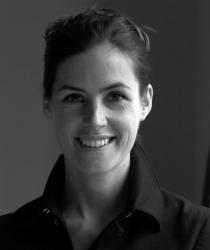
Born and raised in the Scottish Highlands, Anna Keay’s earliest memories of her education involve greater distances than most young children can imagine. “The nearest school was miles away,” she recalls. Although life at Dalmally Primary School was far from unpleasant, Anna relished the opportunity of heading down to Bedales for the school’s renowned three-day test of its prospective pupils. “My parents had a great friend who had married a Bedales teacher [Tim Williams], they’d been extremely taken by what they’d heard about the place and subsequently, my brother had already started there before I arrived in Hampshire,” she continues. “I wasn’t immediately throwing my lot in with this new school but those three days were a wonderful experience. We were all split into little groups, each with a teacher assigned to it, and mine was Alastair Langlands, which made life really exciting and enjoyable.”
Delighted by the prospect of going to boarding school she may have been, but Anna found the initial reality of being away from home almost unbearable. “I was catastrophically homesick until about half-term,” she admits. “However much the school tried to cheer me up, setting up special jewellery-making activities in the workshop and so on, I found myself weeping uncontrollably almost every night. My problem was that my parents were both writers and had therefore always been a constant presence in my home life; now, I was being asked to do without both of them. When I went back home for half-term, my parents suggested that I stick at it and that if I was still miserable, I could move, but the realisation dawned that everything that I had missed so much was still there. Once term had started again, I suddenly felt much better about life.”
By her own admission, Anna was something of an anomalous Bedalian: “I was completely useless at art, drama and music – they happened, but Nick Gleed summed it up best when he wrote in one report that I seemed to be at sea in my lessons! Essentially, I was an academic child. I loved history, English and maths, I was superbly well taught and it was a total privilege to learn from people like Ruth Whiting and John Batstone.”
What I love about Bedales is that it remains identifiably itself
Anna’s view on the characters and abilities of those two great Bedalian figures is a fascinating one. “They were both iconoclasts and both very well matched in their friendly battle of the big beasts,” she reflects. “Both had exceptionally high standards, of course; John would always keep you on your mettle and Ruth could be quite terrifying in a fierce aunt sort of fashion! They were eccentrics, I suppose, but they were also immensely passionate about their subjects, so far away from those stodgy teachers who kill everything for their students. They opened a gateway into the world beyond Bedales and I’ve often thought that it tends to be the cantankerous, idiosyncratic teachers who turn out to be the most inspirational ones. Left to my own devices, I’d have read English at university but Ruth insisted, so it was history instead.”
Leaving Bedales provoked a conflict of emotions in Anna. “By the end of the sixth form, I was dying to move onto the next thing, which in my case was Magdalen College, Oxford,” she says. “At the same time, I’d made some really good friends at Bedales, some of whom I still count as friends, and I felt a grief at parting from them that rivalled anything that I’ve experienced during my adult life.”
Magdalen quickly helped to alleviate any feelings of sorrow. “I loved it and I have to say that I didn’t find the transition at all difficult,” she observes. “It was both really exciting and academically demanding. All that mucking about at school might well have come at the expense of learning a few extra Latin verbs and a fair bit more besides, so I had quite a lot to learn. It was a great experience though, not least because I was now surrounded by a more diverse group of people than I’d been exposed to at that point of my life.”
Alongside her academic pursuits, Anna worked during the school and university vacations from the age of 14: “I’d always had summer jobs because there wasn’t much money around, and it meant I could buy the books and music I wanted. I didn’t join any of the university societies and when my peers were heading off to Thailand during the summer, I was working and eventually beginning to think about what I was going to do with my future. Political research crossed my mind but one job that I took, as a guide in a Scottish castle, ultimately led to my first real employment when I left Magdalen.”
In 1996, Anna took a position as a junior curator with Historic Royal Palaces, helping to look after some of the crown jewels of England’s historical heritage, including the Tower of London, Hampton Court Palace, Kensington Palace, Kew Palace and the Banqueting House in Whitehall. Simultaneously, she took her PhD in history at the University of London and was soon to come into the orbit of Edward Impey, also an Old Bedalian and the curator in charge of Historic Royal Palaces from 1997. “Edward’s a slightly unlikely Old Bedalian and he’s become a good friend over the years,” Anna says. “I was so lucky to be a 24 year-old just setting out in in this world at a time when history was becoming such a mainstream interest in Britain. There was a big Channel 4 series about the Tower of London at the time that I was working there and it was very exciting to see this passion of mine being reflected across the country.”
Edward Impey would move to English Heritage in 2002 as Director of Research and Standards; in the same year, Anna would also be enticed to English Heritage by the post of Properties Presentation Director. Now entrusted with the task of curating and presenting to the public 420 historic sites across England, from Stonehenge to Kenwood House, Anna was forced to balance the great joys of her work with the difficulties of administration at a time when Government cuts were beginning to bite deeply into budgets. “It would have been absurdly myopic to expect organisations such as ours to be spared the general round of austerity,” she says realistically. “I had to make more than 40 people redundant from my own team in one go, which was horrendous, but you have to accept that you’re a tiny part of a much wider picture.”
That an educational institution, instead of being a place of authority and conformity, could, at its best, cherish and celebrate the poetry and romance of life, was, and remains, wonderful and precious to me
After a decade with English Heritage, the opportunity arose for Anna to run her own show. As Director (or Chief Executive) of the Landmark Trust, she now oversees the organisation’s strategy for saving at risk historic buildings and providing them with a secure future. “It’s a bit like being back in the Bedalian world,” she laughs. “We’re a small group, turning over around £12 million a year and it’s very much a family feeling here. There’s something of an anti-authoritarian streak in the Landmark Trust; the absence of bureaucracy and its buccaneering, outdoorsy spirit definitely remind me of Bedalian values. Strangely enough, one of the places that we look after is the Isle of Lundy; its last private owner (now in her nineties) was an OB who married a Bedales teacher – she just sent me a Christmas card of the Harrow Inn, where they lived together in the 1960s.”
The Landmark Trust is far from the only string to Anna’s bow these days. A mother of two, she is also a prolific writer – her latest book, The Last Royal Rebel: The Life and Death of James, Duke of Monmouth (Bloomsbury) was published earlier this year – sits on the advisory panel of the National Trust and as a trustee of Leeds Castle Foundation, and somehow also finds the time to serve as a governor of Bedales.
“What I love about Bedales is that it remains identifiably itself, even though it has become much more professional over the years,” Anna suggests. “The ethos is basically as it always was and changes have been a matter of degree rather than substance. It was absolutely the right school for me in that I found there an unwillingness to accept authority for its own sake and to make assumptions about how life should be, which was so refreshing. That an educational institution, instead of being a place of authority and conformity, could, at its best, cherish and celebrate the poetry and romance of life, was, and remains, wonderful and precious to me.”
“It’s possible that my Bedalian self would have been slightly disappointed that I haven’t taken a more radical role in changing the world,” Anna concludes. “Speaking from where I am now, though, I’ve been so lucky in my work, my marriage and my children that I find it difficult to wish for anything different. There are lots of things that I’d like to learn – how to do piping on a sewing machine, for example – but my main wish would be to multiply the days of the week by three so that I can fit everything in. Writing I wanted to do from childhood, so that is something that I particularly love, but I genuinely enjoy everything that I’m fortunate enough to do and in an ideal world, I’ll carry on doing them all for as long as I can.”
Anna Keay was interviewed by James Fairweather in December 2016

